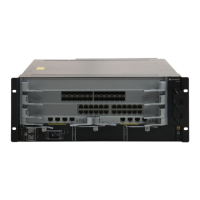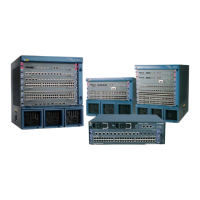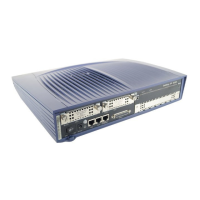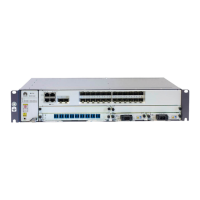3. After a session is set up, BFD quickly sends detection packets. VCCV ping is used to
periodically check the information consistency of the control plane and data plane.
4. When a dynamic BFD session detects a status change of the PW, BFD instructs the
L2VPN to trigger route convergence. If a neighbor is unreachable, BFD instructs the
L2VPN to delete the related session.
NOTE
For details of BFD for LDP LSP, refer to the chapter "MPLS Configuration" in the Configuration Guide
- MPLS.
The format of the BFD Discriminator TLV in a VCCP ping packet is the same as the format of
the BFD Discriminator TLV in an LSP ping packet, as shown in Figure 6-6.
Figure 6-6 Structure of an LSP ping packet
Version Number Must Be Zero
Message Type Reply Mode Return Code Returen Subcode
Sender's Handle
Sequence Number
Timestamp Sent (Seconds)
Timestamp Sent (Microseconds)
Timestamp Receive (Seconds)
Timestamp Receive (Microseconds)
TLVs
PWE3 FRR
With the board applications of PWE3, the requirement for network reliability becomes
increasingly higher, especially for L2VPNs that bear real-time services such as VoIP and IPTV
services.
PWE3 FRR is a solution that can increase the reliability of L2VPNs.
PWE3 FRR is used in the following networking:
Asymmetrically connected CEs
One CE is connected to a PE through an AC and the other CE is dual-homed to PEs through two
ACs, as shown in Figure 6-7.
Quidway S7700 Smart Routing Switch
Configuration Guide - VPN 6 PWE3 Configuration
Issue 01 (2011-07-15) Huawei Proprietary and Confidential
Copyright © Huawei Technologies Co., Ltd.
546

